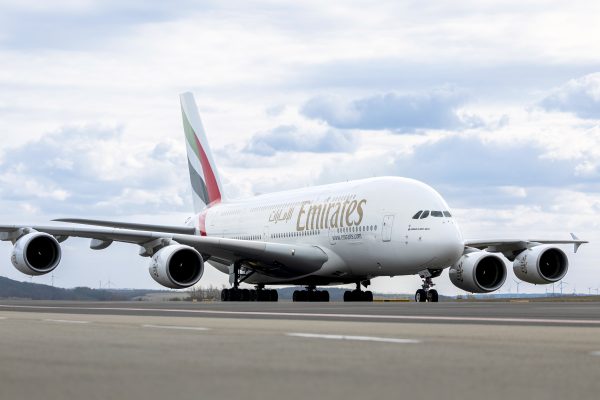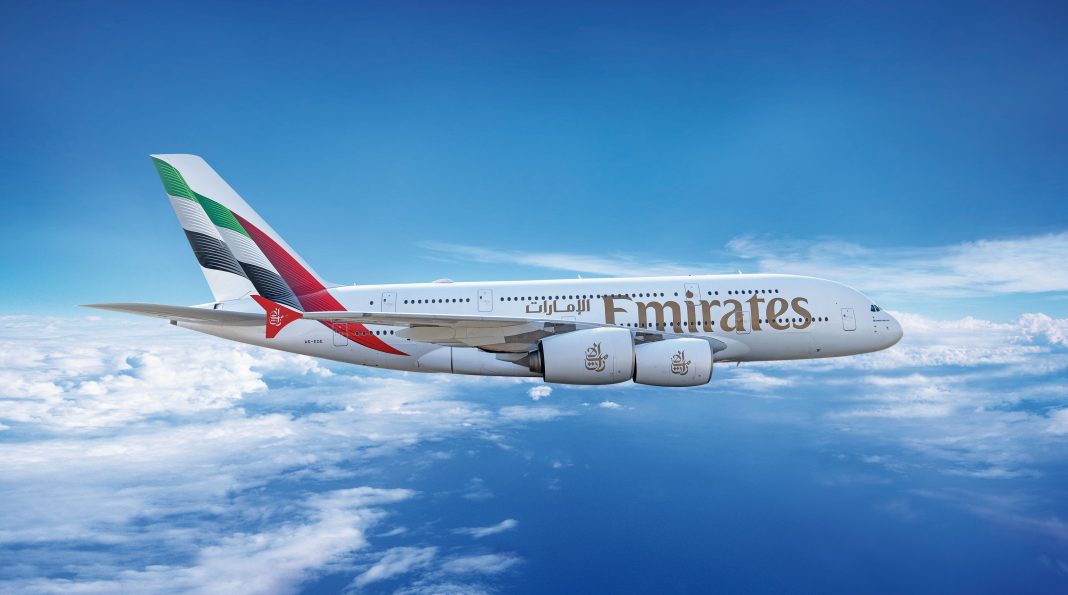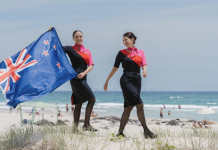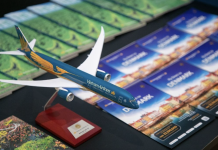DUBAI, 27 October 2025: Emirates has been awarded the prestigious Gold Tier recognition in New York JFK Airport’s 2024 Fly Quiet Programme, the only airline to achieve this distinction.
Emirates’ score of 92.9 significantly outpaced other carriers flying into the airport and taking part in the programme.

The Fly Quiet Programme, developed by the Port Authority of New York and New Jersey, is a voluntary initiative that encourages airlines to minimise their noise signature by utilising quieter aircraft and adopting noise-abatement procedures and preferential runway usage.
This Gold Tier recognition reflects the airline’s commitment to noise reduction at one of the world’s busiest and most operationally complex airports. Since the programme’s inception, Emirates has collaborated closely with the Port Authority, with the airline’s Flight Operations team making sustained efforts to meet all programme requirements. The latest accolade at one of the world’s busiest international hubs follows a series of industry recognitions in noise management over the years, including Silver Tier status at Newark (EWR) and the Chairperson’s Award at San Francisco (SFO) for the Fly Quiet programmes.
Emirates’ fleet noise levels register a notable cumulative margin, exceeding 12 EPNdB compared to ICAO Chapter 4 requirements[2]. The airline’s all-wide-body fleet and high-capacity operations efficiently transport passengers, while achieving optimised noise output by delivering an average of 1.75 million passenger-kilometres per sector, which involves one arrival and one departure noise event[3]. Simply put, this means fuller aircraft flying non-stop over longer distances, all while optimising noise output.
Operational efficiency from high-capacity, long-range aircraft helps deliver significant overall noise reduction. Consider a route serving 500 daily passengers, which a single Emirates Airbus A380 wide-body completes with one arrival and one departure noise event. Operations on the same routing using smaller aircraft, which have different noise characteristics than Emirates aircraft, may require up to three flights in each direction, including a tech stop, generating a total of six arrival and six departure noise events for the same operation. The nature of the airline’s network and high-capacity operations, driven by a fleet of wide-body aircraft, is how Emirates’ operational model optimises noise output while maintaining vital connectivity for communities.
Air connectivity delivers community benefits that extend far beyond airport boundaries, linking families and friends across continents, generating substantial economic activity in local communities, creating employment opportunities, and facilitating international trade and tourism to drive prosperity.
A commitment to quieter skies
Aircraft noise abatement is vital for protecting the health and quality of life of airport-adjacent communities. The airline’s commitment to minimising its noise impact reflects its support for local communities in the destinations it serves, recognising that even small decisions in flight operations can lead to meaningful noise reduction on the ground.
The airline’s noise reduction strategy pursues every available means while maintaining the highest standards of operational diligence, including:
Compliance with noise abatement and curfews: Emirates’ noise management strategy mandates strict adherence to Noise Abatement Departure Procedures (NADP). These procedures, published by state authorities, are integrated into Emirates’s standard operating procedures (SOPs) and are meticulously followed by all flight crews. The airline also ensures ongoing alignment with airport-specific curfews and restrictions, respecting local guidelines at every destination.
Prioritising noise-preferential runways: Emirates proactively utilises them whenever operationally viable, even in challenging conditions such as tailwinds, provided safety standards are maintained.
Transparent monitoring and accountability: Accountability drives Emirates’ operational approach. Any deviation from noise procedures triggers mandatory crew reports, which undergo rigorous review to identify root causes and implement improvements. This continuous feedback loop supports the airline’s commitment to ongoing improvement and responsible operations.
A quieter fleet: Emirates operates one of the industry’s quietest widebody fleets, achieving cumulative EPNdB margins meeting or better than ICAO Chapter 4 and Chapter 14 standards. Ongoing fleet modernisation investments ensure that noise performance keeps pace with technological advancement and continues to improve in the coming years.
Collaborative engagement with stakeholders: Emirates’ approach to noise management extends beyond technical excellence, with collaborative partnerships central to sharing insights and best practices. The airline actively engages in airport authority roundtables and focus groups. It rigorously complies with all regulatory documentation and reporting requirements, helping to build lasting trust and transparency with regulators and communities alike.
For more information about the airline and to book flights, visit: www.emirates.com
(Source: Your Stories — Emirates)








